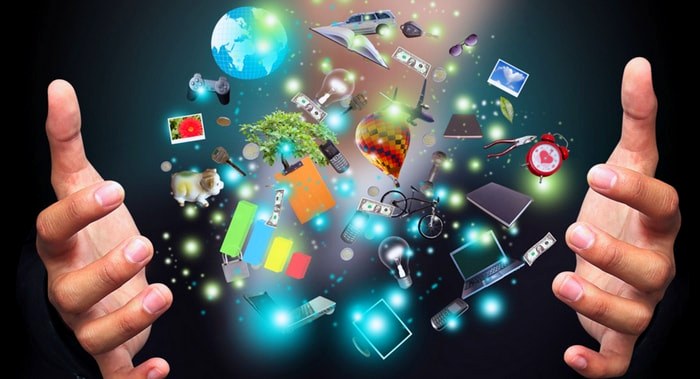The Implementation of Technology in Schools: Enhancing Modern Education
The rapid advancement of technology has transformed numerous sectors, and education is no exception. The integration of technology in schools offers students access to knowledge, tools, and experiences that extend far beyond traditional textbooks. When thoughtfully applied, technology supports more dynamic learning environments, promotes critical thinking, and helps students develop vital digital literacy skills. However, successful implementation requires strategic planning and careful attention to both the potential benefits and challenges.

1. The Role of Technology in Modern Classrooms
Moving Beyond Traditional Learning
Technology has made education more engaging and accessible, providing tools that adapt to diverse learning styles and pacing needs. Traditional lectures and static textbooks are now complemented by interactive lessons, multimedia resources, and digital simulations that make learning more experiential.
- Interactive Learning Platforms: Platforms like Google Classroom, Moodle, and Edmodo enable teachers to share assignments, provide real-time feedback, and foster collaboration among students. These digital resources help shift the focus from passive absorption to active participation, creating a more engaging classroom experience.
- Immersive Learning Tools: Virtual and augmented reality tools are also being integrated to simulate real-world experiences in fields like science and history. By creating a simulated environment, VR and AR enable students to conduct virtual lab experiments, explore historical sites, or visualize complex scientific concepts, enhancing understanding and retention.
Enhancing Communication and Collaboration
In addition to making lessons more interactive, technology supports more efficient communication and collaboration between teachers, students, and parents. Communication platforms such as email, messaging apps, and parent portals foster continuous engagement beyond school hours, ensuring that students receive timely support and guidance.
2. Personalized Learning Through Adaptive Technology
The Rise of Adaptive Learning Platforms
Adaptive learning technology is revolutionizing how students learn by tailoring content to their individual needs, progress, and pace. Through algorithms and data analytics, adaptive learning platforms assess each student’s strengths, weaknesses, and learning habits, then adjust the curriculum to suit their learning journey.
- Educational Software and AI Tools: Platforms like Khan Academy, DreamBox, and Smart Sparrow use AI algorithms to assess student performance and suggest customized learning paths. This personalized approach minimizes frustration and maximizes understanding, helping students master concepts at their own pace.
- Gamification in Education: Gamified learning platforms make education enjoyable and highly engaging. By incorporating elements like points, rewards, and challenges, gamification encourages students to stay motivated, work toward goals, and embrace healthy competition, leading to higher engagement and knowledge retention.
3. Bridging the Digital Divide: Ensuring Accessibility for All Students
Addressing Digital Inequity
While technology can enhance learning, not all students have equal access to digital devices and high-speed internet. This digital divide poses a significant barrier to equal educational opportunities. Schools must consider ways to provide inclusive access to technology to ensure that no student is left behind.
- Equitable Device Distribution: Schools are increasingly adopting 1:1 device programs, where each student is provided with a personal device, such as a tablet or laptop. This initiative reduces disparities among students and enables them to engage fully in digital learning.
- Internet Access and Community Wi-Fi: To address disparities in internet access, some schools partner with local communities to provide public Wi-Fi spots or issue portable Wi-Fi devices to students in need. This collaborative approach helps close the connectivity gap and allows all students to benefit from online resources.
4. Digital Literacy: Preparing Students for the Future
Cultivating Essential Digital Skills
In an era of rapid technological change, digital literacy is as essential as traditional literacy. By integrating technology into the curriculum, schools help students develop critical skills needed to navigate the digital world confidently and responsibly.
- Online Safety and Cyber Etiquette: Teaching digital citizenship is fundamental to help students use technology responsibly. Lessons on online privacy, cyberbullying prevention, and digital footprints empower students to make informed decisions and stay safe online.
- Coding and Computational Thinking: Coding classes have become increasingly common in schools, enabling students to learn programming languages and develop computational thinking skills. These skills foster logical reasoning, problem-solving, and creativity, which are valuable across all disciplines and career paths.
5. Challenges in Integrating Technology in Education
Balancing Screen Time
While technology offers numerous benefits, an over-reliance on screens can have negative effects on student health, particularly eyesight, concentration, and physical activity levels. Educators must find a balance between leveraging digital tools and encouraging traditional learning activities to create a well-rounded experience.
Ensuring Data Security and Privacy
With the increased use of digital platforms comes the responsibility of ensuring student data privacy and security. Schools must implement strict data protection policies and educate students on the importance of data privacy to maintain a secure learning environment.
- Implementing Data Protection Protocols: Schools need to work with platform providers to ensure compliance with data protection regulations like GDPR. This includes obtaining parental consent, restricting data access, and regularly updating cybersecurity measures to protect student information.
- Educating Students on Privacy Awareness: Besides institutional efforts, it’s crucial to teach students about data privacy. Lessons on password protection, data sharing, and responsible online behavior encourage them to use digital tools securely and mindfully.
6. Future Directions for Technology in Education
Artificial Intelligence and Machine Learning in Education
AI and machine learning hold enormous potential to reshape education further. By analyzing student performance, AI can predict learning outcomes and suggest tailored interventions to improve academic performance.
- AI Tutoring Systems: AI-based tutors can provide additional assistance to students who may need more support, offering explanations and exercises tailored to individual needs. These systems can simulate one-on-one tutoring experiences, helping students gain confidence in challenging subjects.
- Automated Assessment and Feedback: AI also enables automated grading and feedback for assignments, saving teachers time while providing immediate, personalized feedback to students. This efficiency allows educators to focus on designing better lessons and attending to each student’s individual needs.
Embracing Hybrid Learning Models
With the rise of remote learning during the pandemic, many schools are now embracing hybrid learning models that blend online and in-person instruction. Hybrid learning offers flexibility, allowing students to learn independently while benefiting from face-to-face interaction with teachers and peers.
Conclusion
The integration of technology in schools presents an exciting opportunity to enrich education, foster innovation, and prepare students for the future. However, success lies in finding a balanced approach that emphasizes accessibility, inclusivity, and security. As technology continues to evolve, educators and institutions must remain agile, adapting to new tools and methodologies that enhance learning outcomes while equipping students with the essential skills to thrive in an increasingly digital world.




